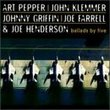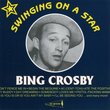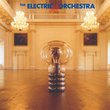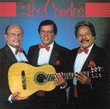| All Artists: Franz Mittler, Hugo Wolf Quartett Title: Mittler: String Quartets 1 & 3 Members Wishing: 0 Total Copies: 0 Label: Cpo Records Original Release Date: 1/1/2008 Re-Release Date: 1/29/2008 Genre: Classical Styles: Chamber Music, Historical Periods, Classical (c.1770-1830) Number of Discs: 1 SwapaCD Credits: 1 UPC: 761203732920 |
Search - Franz Mittler, Hugo Wolf Quartett :: Mittler: String Quartets 1 & 3
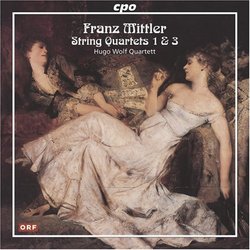 | Franz Mittler, Hugo Wolf Quartett Mittler: String Quartets 1 & 3 Genre: Classical
|
Larger Image |
CD DetailsSimilar CDs
|
CD Reviews..."Recovered Voices"... Sébastien Melmoth | Hôtel d'Alsace, PARIS | 02/09/2008 (5 out of 5 stars) ".
..."Recovered Voices"... From the later-19th Century and up to the First World War, rising economic prosperity in Europe enabled many "little" composers, writers, and artists to flourish as never before. Then, with the cultural chasm caused by the Great War, soon followed by the rise of culturally-conscious propaganda of extreme political groups on both the Right and Left, and finally with the Second World War, virtually all these "little" artists were marginalized, exiled, killed, or otherwise forgotten. In recent years--(late-20th Century and early-21st Century)--laudable musicologists, musicians, and scholars attached to some European record labels have earnestly endeavored to resurrect the Art and reputations of these lost artists. "Recovered Voices" is the term we now use to describe this project. Franz Mittler (1893-1970)'s recovered voice is featured on this fine disc by the Hugo Wolf Quartet on CPO label. Mittler was a native Viennese of Jewish descent. His artistic pedigree is very much in the vein of Brahms, Dvorák, Mahler, Fuchs, Zemlinsky, Korngold, Kienzl, Marx, Weigl, and Zeisl. Robert Fuchs: Complete String Quartets Wilhelm Kienzl: String Quartets 1-3 Joseph Marx: Complete String Quartets Karl Weigl: String Quartets 1 & 5 / Artis Quartett Wien Eric Zeisl: Chamber Music As an youth in the Belle Époque, Mittler had didactic associations with Leschetizky and Labor. Leschetizky: Piano Works played by Peter Ritzen Twilight of the Romantics: Chamber Music by Walter Rabl & Josef Labor In WW1, Mittler honorably served as an officer in the Austrian Army. In the 1920s, Mittler chamber-concertized with the Rosé Quartet--(the Viennese ensemble which had a close artistic relationship with Schönberg and his school, giving the débuts of his always controversial Quartets). Schönberg: STRING QUARTET D MAJOR / STRING QUARTET OP 7 In the 1930s, Mittler was piano-accompanist to the cabaret-like readings and vocalizations of Karl Kraus--(whose intellectual influence had been so definitive in the life and art of Berg). Dicta and Contradicta Half-Truths and One-and-a-Half Truths: Selected Aphorisms Just before the outbreak of WW2, Mittler fled to America and was able to have a successful musical career in the Tin Pan Alley vein at NYC. Two Art Nouveau String Quartets: No. 1 (F-major, 1909), :23mins. No. 2 (d-minor, 1919), :32mins. The bucolic yet urbanely sophisticated F-major Quartet is very Brahmsian without being slavishly imitative. It's sonorous construction is a fine example of turn-of-the-century musical Art Nouveau. It's a perfectly plasticized example of the quartet genre in the vein of Dvorák, Fuchs, and early-Schönberg. The d-minor Quartet--written during WW1 in homage to the devolving Austro-Hungarian Empire--is a travelogue work, in this case bidding farewell to quarters of the Empire: i "Wolhynien"--formerly in the eastern-most reach the Empire (currently, far-western Ukraine); ii "Serbia"; iii "Styria"--between Linz and Graz, the very heart of Austria; iv "Hungary"--featuring very "gypsy" intonations. ." |

 Track Listings (8) - Disc #1
Track Listings (8) - Disc #1